April/May 2011, Zimbabwe, New Frontiers Tours & Travel Educational
By Lyndsay Harshman
April 29 – Johannesburg, SA:I arrived Jo’burg after a relatively easy flight on KLM via Amsterdam. I was met on arrival at JNB (all New Frontiers travelers are met either plane-side – VIP meet and greet – or in the arrivals hall depending on what the US agent has confirmed ) and then transferred to my hotel for the night – the Marion on Nicol – where more of our group was staying before our departure to Zim the next morning. Transfer time from JNB to the Marion on Nicol was approximately 30 mins without traffic. It could be considerably more with morning or evening traffic, but I do highly recommend staying in Sandton or Rosebank rather than at an airport hotel if at all possible. And now, with the new Gautrain, transfers to and from the airport are even easier (stay tuned for my experience on the Gautrain!). For travelers arriving into Johannesburg before a safari or complete Southern Africa tour, I recommend spending a full day here to recover from the long-haul flight and enjoy a Jo’burg tour to learn a bit about the culture and history of the region they are about to explore. New Frontiers offers private city tours, Soweto tours (I recommend our locally guided bike tour) and our new Gardens and Galleries tour for travelers looking for something a bit different.
Marion on Nicol:The reception of the hotel is on the main/entry level of the building (formerly a traditional Jo’burg estate). Staff greeting was professional, efficient and warm. They were able to pre-order me room service since I had missed dinner and took me straight up to my room on the second floor. The hotel is currently a small property (there are plans to expand the rooms and facilities) and the rooms are located on both floor/garden levels and second floor overlooking the gardens and Sandton towers. Decor is modern, cool greys and blues (some garden level rooms in the second wing are done in fresh greens and cream. Pillows and all linens were soft and high quality – certainly luxury level amenities, as well. Rooms on the second floor have balconies. En suite bathrooms offer both soaking tub and large walk-in shower with rain shower head. My only complaint with the room was the outdated wall hair dryer that was cumbersome and inefficient – not the norm in South Africa where hair dryers are usually top-of-the-line. Breakfast was delicious and hot teas and coffee were accompanied by a wide selection of breakfast items (full English breakfast, eggs Benedict, cheese platter, etc.). Full conference facilities, a swimming pool and spa with an impressive selection of treatments, steam room and small gym are also available. The hotel is adding rooms in a separate structure (to accommodate weddings and small conferences that have been a consistent and growing market for the them) and may lose some of the intimate feel (or they may manage to retain it!), but I do highly recommend the Marion on Nicol. Service was excellent throughout the stay. Something to note: In the second floor rooms in the main wing, the bathrooms are out of view of the sleeping area, but the wall separating the bathroom and the entry hall is glass so it is not the most private set-up. You cannot see into the bathroom from the rest of the suite, but should travelers require more privacy, the second wing rooms have a different floorplan with bathrooms that are considerably more private. Those rooms do not have balconies, but are equally lovely overlooking the gardens.
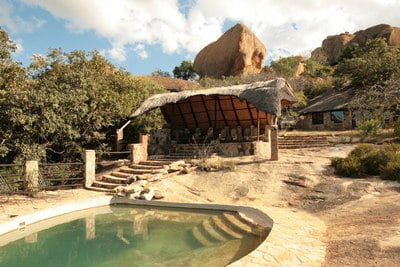
April 30 – JNB/Bulawayo:After a night’s rest, we gathered for breakfast and transferred to the airport for our flight to Bulawayo, Zimbabwe on SA Airlink. The flight was comfortable and on time. The airport in Bulawayo is currently being refurbished and they are using a temporary hanger for arrivals and customs. It’s a bit of a mess on arrival with some confusion on what booth/door to go to first and where to get the visa paperwork – New Frontiers updated the group on this pre-arrival so we were prepared for a bit of disarray. Once entry details were sorted out, the immigrations officials searched our bags all at varying degrees of thoroughness and we met our transfer driver outside of the hanger. We transferred into Bulawayo – a once bustling city that is now a bit tired looking, but still retains a fair amount of charm with historic buildings, a gentlemen’s club (see more below) and some very cool retro street lights. Things weren’t nearly as run down as I expected, and there were people bustling about and security seemed just fine. Locals were friendly and, surprisingly, there wasn’t any of the tension that I’ve felt on occasion in Jo’burg or Nairobi. We continued through town to Big Cave Camp (pictured right) in Matobos for a site inspection. The lodge is fairly rustic, but the location is excellent set among the boulders on the outskirts of Matobos NP. The views of the massive boulders and the swimming pool set in the natural stone were special. The boma was set inside a cave and the main lodge room was built around one of the largest rocks. The thatched rooms (en suite with shower) were quite dated with dark bedspreads, simple and would really only suit travelers on a limited budget and not wanting to stay in Bulawayo at the Bulawayo Club. Note: The owner did indicate that she normally had white duvets on the beds, but they had an overland group coming through that day, so she’d left the older covers on. This camp would be appropriate for self-drive travelers on a budget or for families with small children looking for quad accommodations (family rooms are one double bed and a set of small bunks). The camp is not ideal for very small children as rooms had raised decks with limited railings.

From Big Cave Camp, we continued to Camp Amalinda – one of my favorites of the trip. The camp was set lower than Big Cave Camp, so it didn’t offer quite the same elevated, panoramic views, but what it possibly lost there, it made up for in service, rooms and atmosphere. We were immediately greeted by Sharon, the owner, and her team at the camp. The welcome was warm and we felt at home right away. I knew then that one night was going to be far too short of a stay. We got settled in our rooms, which are what I would call rustic chic – all made of local materials (fallen wood, gathered stones, intact boulders, etc.), finished with fresh white linens and draped mosquito nets. The rooms are all very different and free-form in shape. Bathrooms are quite open so there’s not much privacy if you are traveling with someone you don’t know well. Something about this camp is absolutely unique and quite special – this is the bush: that organic smell that only exists in Africa hangs in the air and fingers of smoke from the donkey boilers swirl between the massive boulders. As we headed out to the pool area for sundowners, the magic of this place sinks in (pictured left). The huge pool is built on top of the natural rock and looks out over the valley towards the park. Behind us, you can see clearly that the camp was built into the kopje and to the west the sun is setting with the colors that only seem possible in Africa. Gin and tonics all around and we sit back to hear a bit more about the story of the camp, how they made it through the really hard times in Zim and what Sharon and the camp staff hope lies ahead. Beks Ndolvu from African Bush Camps joined us for drinks and Paul Hubbard, a senior natural history, cultural and wildlife guide at the camp met up for dinner. Before dinner we toured the rest of the camp, winding up stairs and across suspension bridges through the rocks and between the rooms. Each turn held something new – the honeymoon suite with an outdoor bathtub and a hanging bridge to an outdoor lounge, a cozy bar built into the rocks, the candlelit dining area set up for communal meals around one big table. At dinner Paul gave an in-depth, but clear explanation of the recent history and dollarization of Zimbabwe, and the social and economic struggles that surrounded the process. The whole story of pre-dollarization inflation and the process of changing currencies hadn’t ever been totally clear to me, but Paul’s explanation helped things to fall into place.
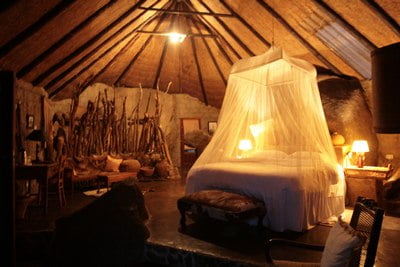
Dinner was a simple roast, Yorkshire pudding, veggies and homemade bread. The meat wasn’t of the quality that you’d find in South Africa or Botswana, a sign of the times in Zim, but the meal was OK and we enjoyed the stories, company and wine. Dessert was a delicious lemon mousse with coffee and tea. After a solid night’s sleep, we woke early to head into Matobos NP and Rhodes’ grave. Unfortunately there was an issue with the water in our room and showering was a bit of a challenge (we reported the problem and the staff later found that there had been a hole in one of the pipes of the donkey boiler and it caused a vacuum that keep the water pressure from working properly). The problem was resolved and we were assured that this was not a common occurrence. Activities offered by the camp include rhino tracking on foot (best done in the dry season – June/July/Aug/Sept), hikes in the area, sundowners, game drives in the National Park. Spa services are available and there are several bars and one of the most beautiful swimming pools I’ve seen in Africa or anywhere really. Some things to consider: Camp Amalinda is eclectic, rustic and service oriented. It is probably not for everyone, but most travelers touring Zimbabwe would be happy with this unique property. Travelers requiring a more traditional hotel should probably stay in Bulawayo at the Bulawayo Club, the sister property to Camp Amalinda. The Camp has many steep, dark and narrow stairways and paths and would be difficult to navigate for anyone with mobility issues. The Camp is an inside look at recent history in Zimbabwe – the struggles and the successes and, in my mind, the exact reason we should be travelling to Zim.
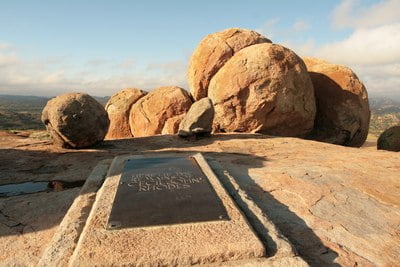
We headed to View of the World and Rhodes Grave inside Matobos National Park. It took about 30 mins to get from the Camp to the location of Rhodes Grave. We did not do a game drive in the park, but it is a good area to see rhino; the leopard population in the area is supposed to be one of the highest concentrations in Africa, but they are very elusive and it’s is unlikely travelers will see one during a short stay. The walk to Rhodes Grave is about 10-15 minutes up-hill on what is referred to as a “whale back” or massive boulder – these are what make up the Matobos Hills. Tennis shoes are recommended for the walk. Once at the top of the “whale back” the view of the surrounding kopjes and landscape is truly breathtaking. Large boulders are balanced at the top near Rhodes Grave, as well as an impressive war memorial. Thomas, our local guide, did a great job at explaining the history of the region, but also just letting us enjoy the place. We were the only travelers at what did seem to be the top of the world! That’s Zim for you.
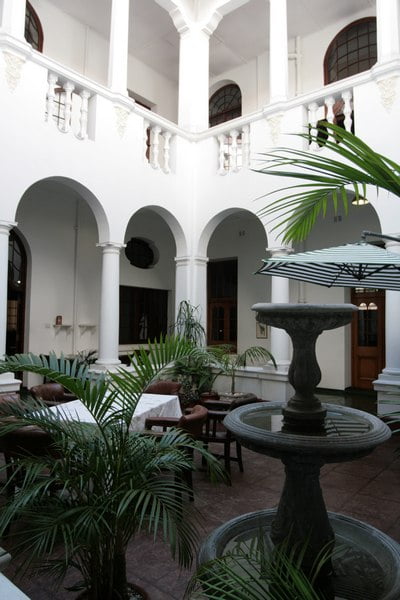
From Matobos, we headed back into Bulawayo to see the Bulawayo Club before continuing on to the Great Zimbabwean Ruins. The Bulawayo Club is a historic gentlemen’s club dating from the early 1900s. While it is still an active men’s club (women are not allowed in the bar area outside of Friday and Saturday nights), the hotel has been carefully restored to its original beauty. The 3 story white building centers around a courtyard filled with plants, chairs and tables covered in white linens and pretty pen and ink drawings of Southern Africa’s birds. We enjoyed a plunger (French press) coffee in the courtyard and I did feel transported back in time. The rooms are very simple, but clean, cozy and feature period furnishings and various views of historic Bulawayo. En-suite tiled bathrooms are also done in the original style with a sink, shower/bath combo and toilet. Public areas include an upstairs bar, several meetings rooms, dining areas, reading rooms, the main “ball room” and a women’s bathroom that looks like something straight out of the Monroe era with red velvet and black and white tiles. Throughout the hotel is historic art and original furnishings that Rhodes and his cronies used. There is nothing kitsch about the Bulawayo Club, it is a beautiful and authentic slice of history. It’s not fancy, but anyone interested in history and culture would find it enthralling and I do think most travelers would be comfortable with standards and amenities. Paul can also take travelers on an interesting walking tour of Bulawayo. Warning! Do not take pictures of any government buildings in Zimbabwe. They are apparently quite serious about this.
After visiting the Bulawayo Club, we continued on to Masvingo and the Great Zimbabwean Ruins (approximately 3 hours). Roads were paved and in great condition. There were several police road blocks along the way, but painless and the police were always very friendly and tourist vehicles are usually simply waved on. The one time we were stopped, they were looking for meat in the vehicle as Southern Africa is working hard to prevent hoof and mouth outbreaks in the buffalo population. Before checking into our hotel we visited Norma Jean’s Lake Resort overlooking Lake Mutirikwi (formerly Lake Kyle). The man-made lake is one of the largest in Zimbabwe and affords beautiful views. Norma Jean’s is a simple, but welcoming inn near the ruins (driving distance about 15 mins). The 8 rooms are small, but clean and offer en suite bathrooms and private verandahs (some overlooking the lake and others overlooking the lush gardens). Lunch was served on the verandah and was a tasty selection of salads, fish from the lake and fresh-baked rolls. Norma Jean’s also offers 4 lodge rooms that are self-catering units designed for families and groups of up to 10 people. It is by far the best place in the area in terms of character and personalized service. All rooms in the Great Zimbabwean Ruins area are very much 3* and quite simple, but Norma Jean’s stood out for its charm and service.
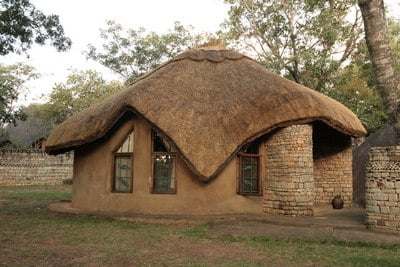
Other hotels are much closer to the ruins. We departed Norma Jean’s and checked in at the Lodge at the Ancient City. The lodge is operated by the Rainbow Tourism Group (RTG), which is 51% government owned. The hotel is in need of even the most simple soft refurbs. Thatching on the roofs of the rondavels had recently been replaced, which is a good sign, but the outdated linens and heavy bedspreads need to be replaced with fresh white duvets and new linens. The en suite bathrooms are spacious and we had ample hot water and great water pressure. The views from the pool and deck are beautiful, and we saw impala and eland walking on the grounds. The entire design of the hotel was inspired by the ruins and is done in rather impressive stone work (Singita Pamushana is also done in this style). The 44 rondavels are spread throughout the grounds and connected by stone pathways – it is a very large piece of property and the more remote rooms are quite far from the main lodge public areas. Vegetation has been left natural and looks a little unkempt, but the pool area and outdoor fire place/pit are nice looking. The main lodge building is a massive structure, which reminded me a bit of the Ngorongoro Sopa, and houses the bar, lounge and dining area. The bar wasn’t very well stocked, but the staff did what they could to provide good service and the evening meal was actually very good. The lodge is a 5 minute drive to the park gate at the ruins. I did prefer the style of the lodge over the Great Zimbabwe Hotel (walking distance from the ruins), but travelers should know that all accommodations in the area are quite basic, but worth enduring for ample time at the ruins. A day tour from Bulawayo would just be too much of an undertaking and I don’t advise that. Travelers could easily spend two nights in Bulawayo or at Camp Amalinda, do activities there, transfer in the afternoon to the ruins and enjoy a relaxed evening and sundowners at either Norma Jean’s or LATAC, overnight and spend the full morning the following day at the ruins. Four hours is about the required time to properly explore the impressive site.
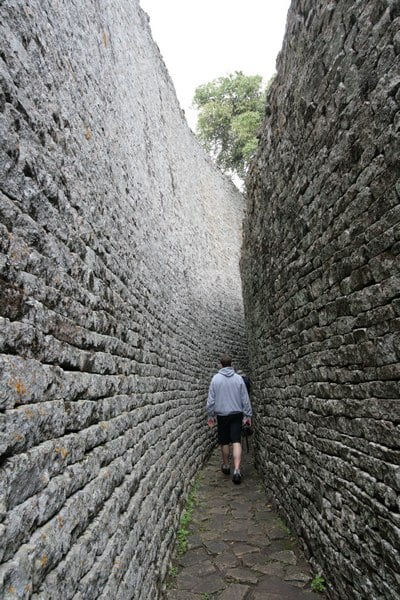
We were up at dawn, had a quick bite and were off to the Great Zimbabwean Ruins. Thomas left us to return to Bulawayo (the 11 seater van was very comfortable and air-conditioned), we would tour the ruins with a local specialist guide and Singita’s vehicle was picking us up after our tour for the approximately 3 hour transfer to Pamushana. Our local guide for the tour of the ruins, Lovemore (yes, that was his real name) was one of the highest quality local guides I have had at any of the ancient sites I’ve toured (Machu Picchu, Tikal, Yaxha, etc.). Lovemore’s knowledge was very impressive and he was well-spoken and articulate. The first section of the tour visits the hill-top site where the ruler/king lived and from where he communicated with his people. The stone stairs up the hill are the original path dating to the 11th century when the ruins were first built. It is steep, narrow and challenging and travelers who are less fit should ascent via the modern path. Neither is easy and anyone with balance or mobility issues should take trekking poles for stability. The hill-top site is stunning and was much more impressive than I expected – incredible views of the valley and the Royal Enclosure below, the lake and countryside. It was misty early in the morning and the wisps of mist moving between the rocky outcroppings and made the scene even more ethereal. We learned about the history and politics of the ancient city, as well as the Great Zimbabwean Birds. From the hill, we hiked down to the Royal Enclosure, via the cultural village (a few huts to show the traditional lifestyle and a bit of singing and dancing – not the most authentic experience, but it didn’t drag on and on and was fairly painless). The Royal Enclosure is the tallest ancient structure south of the Sahara Desert. It was certainly impressive, but I did prefer the hill-top site with the views and narrow pathways. The tall walls of the enclosure and beautiful stonework were quite impressive, as well.
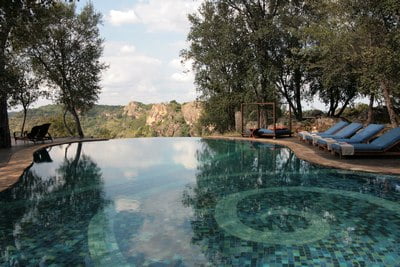
From the Great Zimbabwean Ruins, we continued on to Malilangwe Wildlife Reserve and Singita Pamushana. Once again, the roads were beautifully paved and the scenery ever-changing and quite beautiful. We passed many more traditional villages, mining towns and cotton fields. From the main road and the airport where the Federal Air flight from Jo’burg lands – Buffalo Range – it is about 25-30 mins on dirt road to the lodge. I actually really loved the approach to the lodge. The driveway winds around the back side of the hill and looks out over the expansive savannah beneath Pamushana. The vehicle arrives into the loading area and you then walk up the hill a couple hundred yards, this whole time the lodge is hidden from view and rock dassies scurry through the surrounding boulders. Then, the lodge comes into view – the 6 suites and one villa are scattered along the ridgeline overlooking Malilangwe dam and the opposite ridgeline. Walking up behind the lodge, nothing seems as spectacular as it is from the main area. The swimming pool seems to fall off the cliff into the lake below, sundecks are placed to take advantage of the vistas. The dining area, lounge and sitting areas are all decorated in the most vibrant African fabrics, richly colored tiles and little touches that are oh-so-Singita. But, this Singita doesn’t strike me the same way that Boulders and Ebony did. Those lodges are a bit more, how do I say it? Planned.
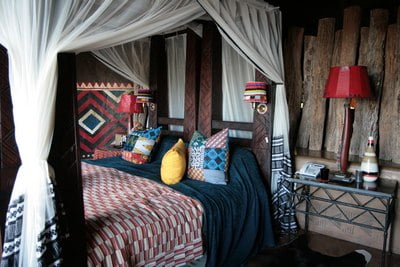
Pamushana feels more laid back, and dare I say, down-to-earth. This is the people’s Singita! Immediately the staff came out of the woodwork and greeted us, Jason the manager and Shelley, the assistant manager had greeted us at the vehicles and welcomed us up the pathway. Cold drinks and cool facecloths were waiting, as was an amazing lunch (delicious hamburger and fries with a perfectly chilled South African rose!). There was something about Pamushana that, even at first glance, was special. It was different than any other lodge I’ve visited in Africa. It was regal and luxurious, while being unpretentious and relaxed. The setting was among the best I’ve seen (other favorites based on setting: Mahale Greystoke in Tanzania, the Bekele Mola Hotel in Arbaminch, Ethiopia, Ellerman House, Cape Town, South Africa, Ivory Lodge at Lion Sands, Sabi Sand, Ngorongoro Crater Lodge, Tanzania…) and the staff pulled it all together. Throughout Africa it’s very common to find a rather international demographic among lodge managers and staff, nothing is wrong with that, but this crew was Zimbabwean through and through. I think, in the end, that’s what made it special. The Zimbabwean spa therapist who had trained in Harare and found her dream job in the bush at Pamushana and the up-and-coming female sommelier who had returned to Zimbabwe after most of her family left years ago were just two examples of the passion the staff had not only for their country, but for their lodge. That passion seeped into every element of the experience at Pamushana from the meals through to the game drives.
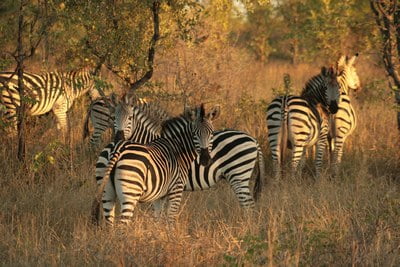
While we were at Pamushana during the shoulder season, I still thought we had a relatively good game experience (note that Craig and Ally of New Frontiers were at Pamushana in September – dry season and on one night drive they saw wild dog, leopard and lion, so the game is definitely there!). We had wonderful elephant sightings,beautiful zebra, a huge buffalo herd, wildebeest, several small antelope species, a pair of hyena, kudu, impala, baboon, hippo in the dam, amazing birdlife – including fish eagles hunting! The cats evaded us, but we saw evidence of them everywhere, including the remains of a porcupine that met a lion! The vehicles were extremely comfortable and our guides were not only highly trained, but personable and had great senses of humor (which simply makes things more fun!). The landscapes at Malilangwe were breathtaking – one moment we’d be driving through a cluster of kopje’s, the next moment we’d drive through a forest of mopane before reaching an expansive savannah dotted with ancient baobab trees. It was all so beautiful, and NO ONE else was there – this air of secrecy, you’re your own personal Africa only added to the allure of Pamushana.
One night we were lucky enough to experience a 5-course (they normally do 7 courses, but our group voted for 5 after all of the eating we’d done!) meal with wine pairing. Pamushana’s sommelier led us in the pairing/tasting as we dined on Singita’s finest, including a delicious main course of quail. An evening to remember with lots of laughter, excellent wine and that magic that Singita pulls off no matter the location!
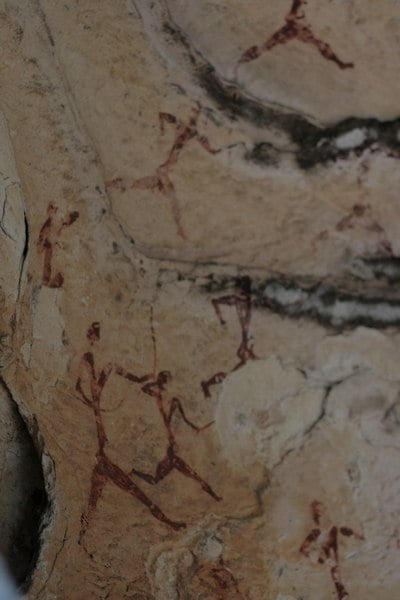
During our time at Pamushana we enjoyed a sundowner cruise on the lake aboard Pamushana’s pontoon boat, during which we were lucky enough to view adolescent elephant rough-housing in the lake, excellent birdlife and a beautiful sunset. We also ventured out on two game drives through the diverse reserve environments, walked to the 2,000-year-old rock paintings (which were far more impressive than I expected them to be). The rock art was comprised of red-toned paintings of animals, people, hunting scenes and more. With the early morning light shining on the paintings and just our small group viewing them, it was really quite a special experience. Others in our group who had seen rock paintings in South Africa, Botswana and Namibia said these were comparable to other San rock paintings in Southern Africa. Some of our group went out fishing one afternoon, while others played tennis and some just chilled by the pool. I started thinking that after just one day, Pamushana was the kind of place I could stay for a week…or more.
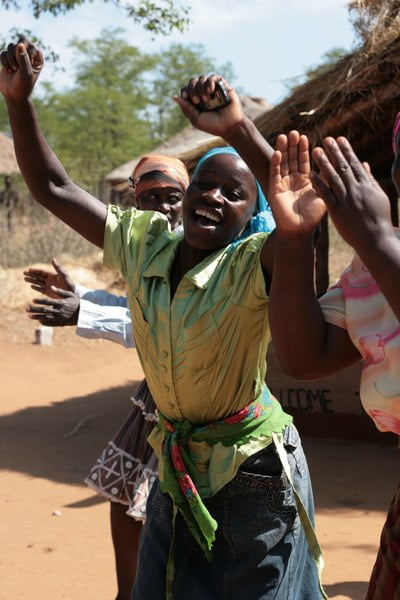
We were all fairly melancholy the morning we left Pamushana, but had to press on to explore the rest of Zimbabwe. On our way to Buffalo Range airstrip, we visited several of the community sites that the Malilangwe Trust supports, including a feeding program for small children and their moms, a community co-op garden for both consumption and sales, a medical clinic with a maternity ward and an HIV testing and counseling center and finally a primary school that Malilangwe had funded updates on. It was good to see such far-reaching, well-managed and monitored projects. Pamushana is making a mark on the community, certainly.
Things to note about Singita Pamushana: This is a very relaxed experience, no rushed game viewing, no drive here to see this and then rush there to see this. This is slow Africa. For people who have to see the Big 5 in a day or two, they’d best go to Sabi Sand. For travelers who want to go slow and see what they see and do a variety of activities, Pamushana is excellent. Food and wine lovers, cultural travelers, those interested in rock art and boating/fishing, will all be at home here. There is currently a twice weekly flight from Jo’burg to Buffalo Range making Singita Pamushana an easy add-on to South Africa!
We flew from Buffalo Range to Hwange on Solenta Air. The plane was in excellent condition, top-notch pilots, great snacks and refreshments on board and the couple-hour-long flight was quite scenic. Upon landing at Hwange, we were met by the vehicle from The Hide and transferred by road into and through the park to The Hide’s private concession. The first part of the drive was on tarmac before entering the park where we were then driving on a main dirt track through the park until we reached the park gate and entered The Hide’s private concession. The Hide was originally built in 1922 by the Preston Family. The 10 tents have recently been refurbished and are fresh, bright and comfortable. The camp offers both Standard (8 tents) and Luxury tents (2). I would highly recommend a Luxury tent as they are larger and offer both a bath tub and shower – the standards are fine, but the luxury is nicer enough that it would be worth the upgrade. The decor is done in cream and soft earth-tones with nice art pieces here and there. Bathrooms in both the standard and luxury are quite open and the tents might not be private enough for people sharing who do not know each other well or are not a couple. The Hide has taken several measures to be more eco-friendly and they’ve replaced their donkey boilers with gas to heat water in the rooms and they also have eliminated plastic water bottles and only use jugs of purified water and metal camp cups on game drives and in rooms. It’s nice to see a camp make the effort to do away with the plastic bottles that often end up in the hands of local children and littering the highways. I wish more lodges would offer this.
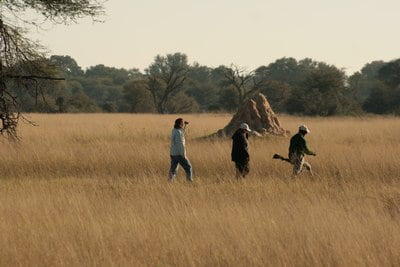
Dinner at The Hide is a small buffet with all of the guests seated around the big table. It was a friendly dining experience, but the night we were there, the camp was full and 20 people seated around one table actually made the camp feel bigger that it would have otherwise. The food was good and wine is included at dinner. After dinner there is the option of a shorter night game drive or travelers can simply sit around the fire or relax. A few of us went on the night drive (The Hide can only drive at night on their small private concession so it isn’t a long drive) and we saw quite a few spring hares, a civet cat, hyenas in the distance and we saw tracks of a pride of lion that had circled the concession and then went back into the park (where we couldn’t drive at night). During the morning hours you have the choice of going on a bush walk (in the concession) or a shorter morning game drive before breakfast. After breakfast a long game drive is available; there are also hides and a sleep out at The Hide. Our game drive guide was good, but not excellent. However, the gals in our group who went on the bush walk said the guide really came out of his shell and showed off his skills and knowledge. Perhaps it would take a few game drives to get to know a guide and their style – it is always hard to gage guides and game viewing on a FAM when you only have a night or one game activity. Other guests at the lodge seemed to have a great rapport with their guides so I am confident that the guiding is up to snuff. The game didn’t cooperate with us on our trip (a one-night-stay and shoulder season!), but generally I think Hwange has excellent wildlife. On our morning game drive we did not see any cats, but saw lots of lion prints in the sand. We did see elephant, zebra and other plains game. One of the major perks of The Hide is the waterhole that is directly in front of the lodge. We heard elephant in it at night and the game viewing from the tents and lounge is often superb. Sunrise over the waterhole with steam rising and animals coming to drink was breathtaking. The Hide is a great experience for travelers who want to stay busy and get out of the vehicle and do some walking or experience a hide.
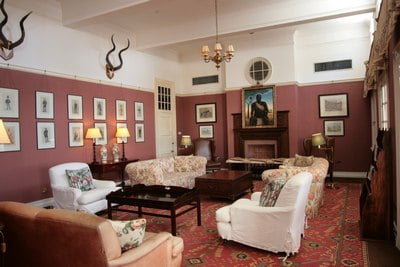
From The Hide we transferred to Victoria Falls (1 hour drive through the park, 2 hour drive in a closed vehicle on paved road to Vic Falls). Upon arrival we checked in to the Victoria Falls Hotel. The hotel is looking good, not at all shabby or worse for the wear. We stayed in standard rooms in the Stable wing and they were just fine – beautiful bathrooms with claw-footed tub and separate shower all done in black and white – I would recommend that agents book their clients into suites in the main building (some have views of the gardens and spray from the Falls). The standard rooms in the newer wing are quite spacious and offer a writing desk and sitting area. My only complaint, really, was that the mosquito nets cheapened the rooms. They are a necessary evil, but just the way they were hanging made the nets seem like an after-thought.
We walked through the property and across the street to the Ilala Lodge for a site inspection and snacks on the verandah. The hotel was done in the colonial style, but is not as historic as the VFH – it is a contemporary building designed in a colonial style. The verandah is beautiful and overlooks the spray of the Falls – the view was really great and the hotel is very close to the Falls. We saw a standard room as the suites were fully booked. Rooms were certainly more contemporary, but nice, clean and offer everything a traveler would want. The second floor rooms have small patios overlooking the Falls’ spray and gardens. The ground floor rooms have garden views. This hotel is a great value, surely.
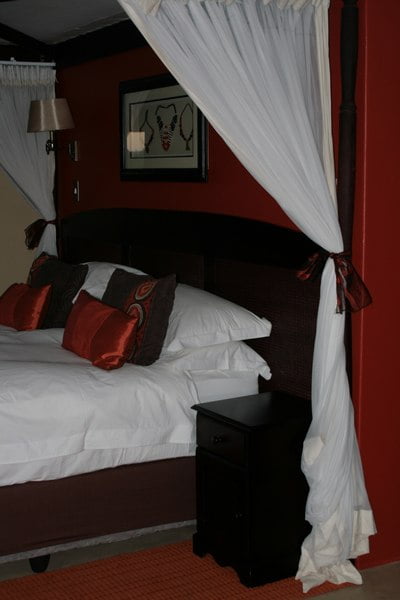
After lunch we visited The Elephant Camp and toured the elephant back safari center. The elephants at the center were rescued (many the offspring of culling operations) and have been trained and rehabilitated to interact with humans. That said, these are still wild animals and waivers must be signed, etc. Upon arrival at the center travelers are given a briefing and safety measures are explained. The entire experience lasts approximately 3 hours, including the feeding of the elephants after the ride and coffee and pastries (after the sunrise ride) or sundowners after the sunset ride. It seemed to be a well-operated outfit. Minimum group size is 2 and maximum in the group (per ride) is 22. Guides and staff accompany the group. Travelers need to realize that this is an elephant back ride and not a wildlife safari. There is plains game in the sanctuary that guests may see, but game viewing is not the goal of the experience. From the center we continued up the hill to the Elephant Camp. The camp is lovely! What an incredible view, too, overlooking the spray of the Falls in the distance as well as the river gorge. Stunning, especially at sunset. The 9 tents reminded me a bit of Swala Camp in Tanzania in the sense that they have a canopy/tented top and more of a suite/room feel to it with brushed concrete floors and spacious en suite bathrooms. Each tent has a sitting area inside, a private verandah with plunge pool and a bathroom with soaking tub, shower and sink/vanity. Public areas were very nice with a bar, dining area and small pool and sun deck. The management was very welcoming and experienced. It is a great spot for travelers who want something unique and to either start their safari on a tented note, or end their safari with the same feel as being in the bush (vs a bigger traditional hotel). It’s also great for travelers interested in the elephant back safaris and all of the activities available in the area. The camp is a favorite with honeymooners and I can see why – very romantic and great service. I wish we would have had night at Elephant Camp to further experience the place, but I would recommend it based on what I saw hands-down.
We ate dinner at the Jungle Junction, which despite the name was actually quite good. Live music and traditional dance performances happen nightly at 7pm, we arrived closer to 8pm so we just caught the tail end of the show, which was probably best for chatting at dinner. The buffet was very thorough and offered sushi, soups, salads, hot mains, beef, crocodile, fish, pork, a full assortment of desserts, coffee, tea, etc. For travelers who are looking for something less formal than the Livingstone Restaurant inside the hotel, this is a great option (no dress code). The Terrace also serves sandwiches, salads and lite meals until the early evening hours. The menu for the Livingstone Room looked very good, as well, but guests need to remember that no safari attire is allowed whatsoever – collared shirts and closed toed shoes (no sandals) on men.
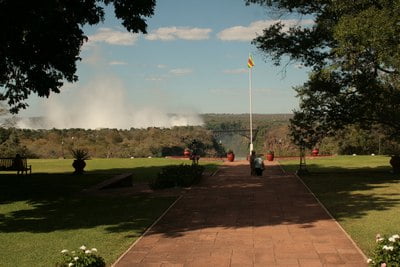
The following morning we walked a bit around Vic Falls, a few people in the group walked down to Falls themselves (which took a couple hours round-trip and there are tourist police to ensure that you won’t be bothered by people selling things on the street, etc.). There is a wonderful Women’s Market where you can buy fabrics, hand woven, intricate baskets and other handicrafts (the men’s market is separate!). There is also a more contemporary market for jewelry and clothing, plus shops in town. Of course, as most places in Africa, teenage boys and young men come up to you trying to sell you 1 billion Zimbabwean dollar notes and other small trinkets, I found a courteous, but firm “no thank you” was enough to send them looking for another customer. Everyone was friendly and I felt safe walking through the town. It really is just a small town. Canoeing/kakaying, white water rafting, bungee jumping, microlite, etc. are all available in the area depending on how adventurous your travelers are.
We headed to the Victoria Falls airport, just 15 minutes or so outside of town to board our South African Airways flight home. The airport needs a little love, but so does Livingstone just across the river in Zambia! The long line moved efficiently and we went and grabbed a coke at the bar in the lounge. The flight back to Jo’burg was an easy one and it did seem strange to be back in the hustle and bustle of big city life just like that.
Zimbabwe certainly isn’t for everyone. But, I can wholeheartedly say that it might be for many more travelers than most North American outfitters think.
Who Zim is for:
- Repeat (or perhaps, on occasion, a first-time) Africa travelers looking for a great value, excellent guiding and variety experience – culture, history, wildlife (plus land, water, game drives, walking).
- Travelers who like to be the first or one of a handful. Zimbabwe used to be a premier safari destination in Southern Africa. Things will eventually return to how they were, so, in the meantime those cutting-edge travelers better get there now and be one of the few people in the parks and at the sites. These are the same people who go to Mozambique, Ethiopia, Uganda/Rwanda (a few years back).
- Travelers who are more price-conscious – Zimbabwe, especially Hwange and Mana Pools area offer excellent alternatives to Chobe and the Lower Zambezi…and far less traveled.
- True adventurers who want to do canoe safaris in Mana Pools, etc., cultural buffs who are interested in ancient rock art, ruins and culture (ie Pamushana’s Trust programs).
- Travelers who want to connect with locals, both black and white Zimbabweans, hear personal stories and learn about Zimbabwe’s often intense recent history.
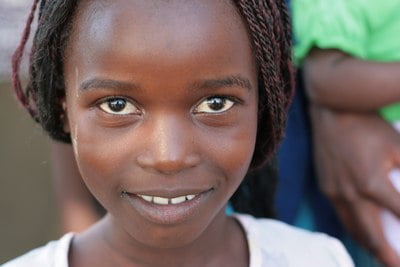
Zimbabwe truly resonated with me; it struck a chord that Botswana or South Africa hasn’t hit in the same way (believe me, those countries have their own styles and unique, wonderful attributes, too!). Zimbabwe was wild and refined at the same time, honest and passionate, raw and stunningly beautiful. People’s smiles were wide, but their faces worn – the whole country feels like a bit of an anomaly at times. But, it is magical and has such a timeless feeling. It feels like old Africa, an Africa that I really never knew…but one that I hope still exists. And it does. I wish everyone could experience it, and, as so many of the local Zimbabweans say, “Forget Uncle Bob, just come see Zim.”
All photos copyright Lyndsay Harshman.



Leave A Comment
You must be logged in to post a comment.